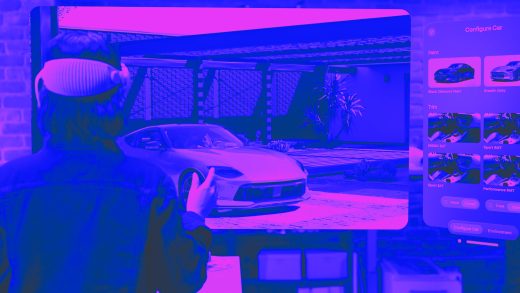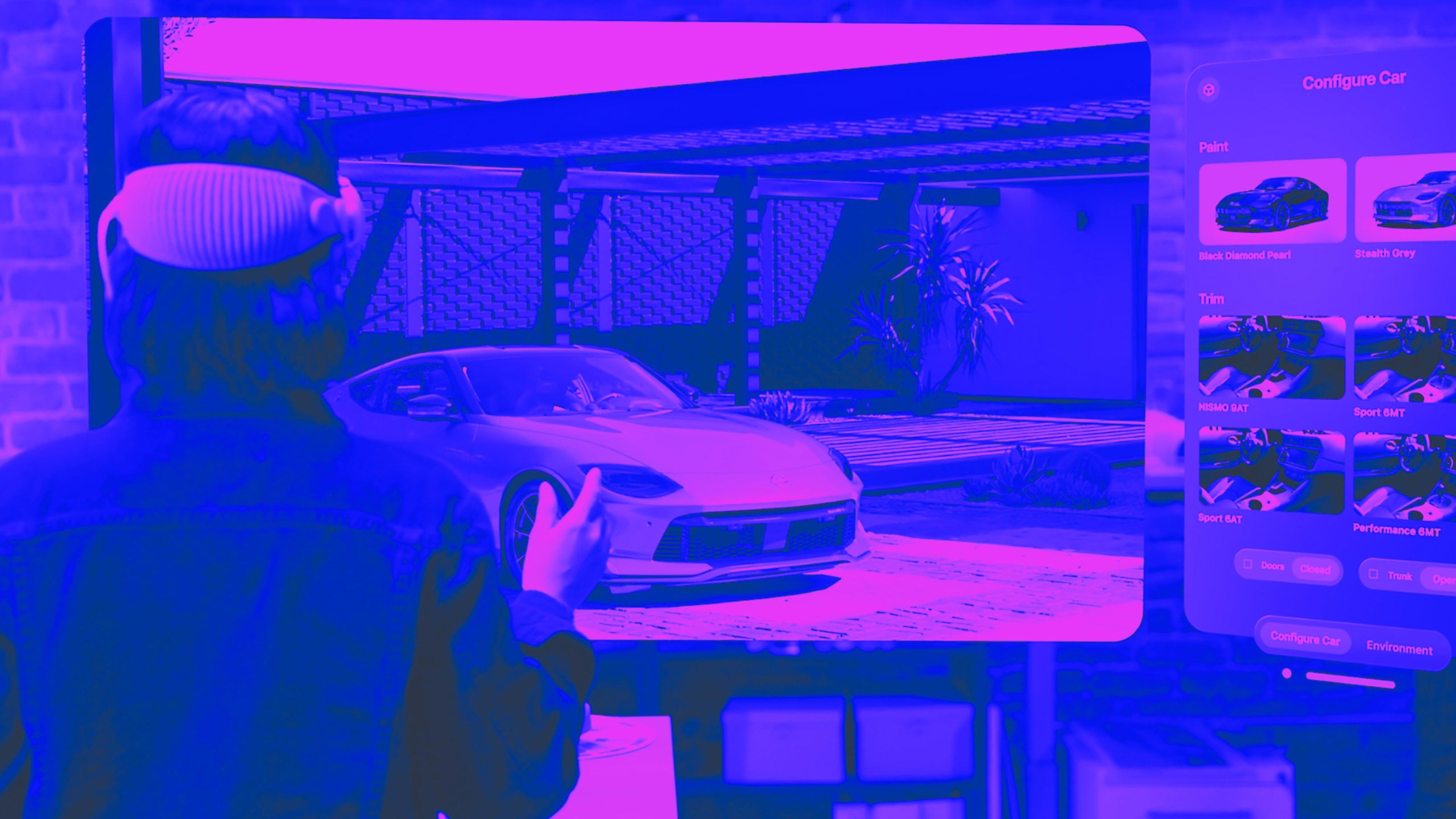How a virtual sports car made me rethink the Apple Vision Pro
How a virtual sports car made me rethink the Apple Vision Pro
Apple’s spatial computing headset may be pricey for a piece of consumer electronics. But it could also be an incredible bargain in a business context.
The 2024 Nissan Z sports coupe is a very sexy car. I know because I recently spent some quality time with one—admiring it from a variety of angles, inspecting its fit and finish, and sitting in the driver’s seat. I didn’t actually drive it, but I had a good excuse: This wasn’t a real car. It was the next big thing, though—an uncannily realistic virtual vehicle, made possible by Apple’s Vision Pro headset and some new software from Nvidia.
Here at Fast Company, our single biggest editorial project is our annual ranking of the World’s Most Innovative Companies. For this year’s edition, we gave the top spot to Nvidia, the chipmaker that’s as responsible as anyone for fueling the current AI boom. For our package, I spent time with its cofounder and CEO, Jensen Huang, who explained how a company that got its start in 3D graphics more than three decades ago has expanded its ambitions to such powerful effect. You can read that story here.
Calling Nvidia a chipmaker, as I just did, might be accurate, but it’s also incomplete. The company’s success is about the whole stack it’s built: chips, supercomputers based on them, and software that harnesses their power in an array of fields, including entertainment, healthcare, manufacturing, and much more. On the software side, these offerings include Omniverse, a cloud platform for creating digital twins of anything in the real world, which can benefit from being simulated, from a retail store to a factory floor to . . . well, a sports car.
On Monday, during Huang’s two-hour keynote at Nvidia’s GTC conference, he announced that Omniverse customers were getting the ability to bring these simulations to the Vision Pro. Onstage, this tidbit flashed by in a torrent of other news. But a few days earlier, I visited Nvidia headquarters to get an extended demo for myself. Even as someone who’s spent a fair amount of time trying out Vision Pro apps, I was dazzled—and found myself taking Apple’s headset seriously as an enterprise-y tool for the first time.
My demo took place in a Nvidia conference room that was spacious enough to hold me, several Nvidia staffers, and the digital Nissan Z without feeling overcrowded. Historically, promotional imagery associated with AR and VR has often overhyped the the state of the technology. In this case, the opposite was true: the stock image Nvidia released of the Vision Pro app in use, which shows the car constrained inside a virtual frame, doesn’t remotely convey the remarkable experience I got by strapping on the headset.
I knew the vehicle was being generated on tiny screens in front of my eyes, but the effect of it being parked in front of me was so overwhelming that I carefully stepped around it rather than walking right through it, as I could have done. The car’s paint job glistened. The carpeting inside the trunk was fuzzy. The level of detail was so obsessive that the fine print embossed on the tires was legible, along with a tiny depiction of the Michelin Man.
As you might expect of a virtual automobile, this one was configurable, with a neat little floating control panel that let me choose color options and the like with the Vision Pro’s gaze-and-tap gestures. I also shrunk the car down to an adorable toylike scale, then blew it up until I could duck my head behind the wheels and see what was under the hood without opening it.
Have I conveyed yet how magical this all felt? Apple certainly deserves its fair share of the credit, but so does Nvidia. Rather than ray-tracing 3D imagery on the Vision Pro itself, the app is a viewer for the cloud-based version of Omniverse. There were only occasional hints that the rendering was being done on some remote supercomputer: For instance, when I swiveled the car to a different position, it sometimes went slightly transparent as Omniverse recalculated my view. A piece of content-creation software called COATCreate, from a company called Katana, was also involved in the Z’s digitization.
In another Omniverse/Vision Pro experience I got to try at Nvidia, a section of the Taiwan electronics plant where the company’s DGX computing boxes are assembled got recreated in the conference room. Not at full scale—which wouldn’t have fit—but downsized to appropriate dimensions. Watching boxes roll off the assembly line wasn’t quite as entrancing as fooling around with a supercar, but it might have been an even better demo of the Vision Pro’s usefulness as a business tool. And the headset’s $3,500 price tag wouldn’t faze anyone responsible for managing a factory; in fact, it would sound remarkably cost-effective.
Now, the notion that an AR headset might find its place in the business world is not an epiphany on my part. That’s where Magic Leap and Microsoft’s HoloLens found their niche years ago, after a brief period when they seemed like they could evolve into consumer electronics devices. But the Vision Pro already outdoes those headsets in display quality, ease of use, and technical polish. And products such as Omniverse, which debuted in 2020, should further lower the barrier to adoption among business customers.
As an Apple business, the Vision Pro won’t succeed unless millions of consumers eventually buy one—or, more likely, a lower-cost descendant. Fully pivoting to the enterprise market à la Magic Leap would amount to failure. But Tim Cook has already spoken enthusiastically of the headset’s business applications. And when you think of it, virtually every Apple product is already widely used in enterprises, ranging from all those iPhones used by worker bees to stuff like Alaska Airlines’ iPad-powered check-in stations.
At the moment, seeing how Vision Pro could quickly become popular in a business context is easier than sussing out its future as a consumer gadget. After getting a taste of that potential, I sure look forward to seeing where companies such as Nvidia take it.
ABOUT THE AUTHOR
Fast Company – technology
(26)



